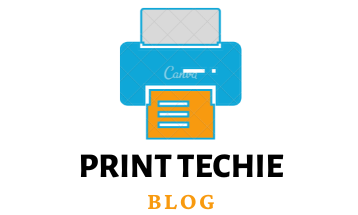Sublimation printing is a popular technique used to print graphics and text onto fabric. It uses heat to transfer dye into the fabric, creating a vibrant, durable print that won’t fade or crack over time. The key to getting the best results from sublimation printing is to use the right fabric. Different fabrics have different properties that can affect the quality of the print, so it’s important to choose the right fabric for your project. In this article, we’ll discuss the best fabrics for sublimation printing and how to choose the right fabric for your needs.
What is The Best Fabric for Sublimation Printing
Types of Fabric for Sublimation Printing
Polyester
Polyester is by far the most popular type of fabric for sublimation printing. This is because polyester is a synthetic fabric that is specifically designed to be resistant to heat. Polyester also has a smooth surface that allows for vibrant and accurate color reproduction.
Nylon
Nylon is another synthetic fabric that is commonly used for sublimation printing. Like polyester, nylon is resistant to heat and has a smooth surface that allows for vibrant color reproduction. However, nylon is not as durable as polyester and is more likely to suffer from pilling and fading over time.
Cotton
Cotton is a natural fabric that is often used for sublimation printing. Cotton has a smooth surface that allows for accurate color reproduction. Although cotton withstands heat better than other materials, such as polyester and nylon, the colors might not be as bright. Additionally, over time Cotton is more likely to develop pills and fade in color.
Linen
Linen is a natural fabric that has a slightly rough surface. This rough surface can actually help to create more vibrant colors during sublimation printing. However, linen is not as heat-resistant as synthetic fabrics like polyester and nylon, so it may not produce as vibrant colors. Furthermore, linen is more prone to pilling and fading with the passage of time.
Silk
Silk is a natural fabric with a smooth surface similar to that of nylon and polyester. Silk can generate brilliant colors for sublimation printing because it is also moderately heat resistant. Although silk is luxurious and gentle, it is also easy to damage if not treated with care.
Types of materials not suitable for Sublimation Printing
Polypropylene and rubber are two materials that people often try to print on but unfortunately, they are not suitable for sublimation printing. This is because the ink used in this type of printing requires materials that can absorb it rather than being repelled as polypropylene and rubber do. If you’re looking to print on either of these two materials, then you would be better off using a different method, such as screen printing or pad printing. Ultimately, the right choice of printing method depends on the shape and material of the object you want to decorate.
FAQs
Q: How Does The Sublimation Printing Process Work?
Sublimation is a printing process that uses heat and pressure to transfer dye onto materials such as polyester, poly-coated substrates, or polyester-coated fabrics. The process begins by printing an image onto transfer paper, which is then transferred to the substrate using heat and pressure. The dye is able to change from a solid form to a gas form without ever being liquid.
Q: Is polyester only good for sublimation?
While polyester is the most popular material for sublimation, other materials such as nylon, spandex, and bamboo rayon can also be used. It is important to check the material composition of the fabric for suitability before attempting to sublimate it.
Q: Are there any fabrics not suitable for sublimation printing?
Fabrics that have a high melting point and low absorbency, such as polypropylene, and rubber, are not recommended for sublimation. Dark and bright-colored fabrics are also not recommended for sublimation as the colors will not be accurate or vivid.
Read: Can You Print on Tracing Paper
Q: Can you sublimate 60 cotton and 40 polyesters?
There is no definitive answer to this question, as the suitability of any material for sublimation printing will depend on a number of Meetings fabrics; polyester material is no good cotton-polyester blend. Depending on the type of polyester used in the blend and how much heat and pressure is applied during the printing process, it may or may not be suitable for sublimation. In general, cotton-polyester blends are generally not optimal for sublimation printing, as the heat and pressure required to transfer the dye may damage or discolor the fabric.
Q: Is there any special preparation needed to print on fabric with sublimation?
Yes. Before printing on fabric with sublimation, it is important to make sure the fabric is properly washed and pre-shrunk to prevent any print distortion. Additionally, fabrics should be free of any wax-based finishes or glossy coatings before printing.
Q: What fabric is best to sublimate on?
Fabrics with a high percentage of synthetic fibers or blends with polyester are the best candidates for sublimation. Nylon, spandex, and bamboo rayon are also suitable for sublimation printing. It is important to check the material composition of the fabric for suitability before attempting to sublimate it.
Conclusion:
Sublimation printing is a popular and permanent digital printing process that can be used to transfer dye onto fabric, paper, foam board, and metal. Polyester is the most popular fabric for sublimation, but other fabrics, such as nylon, spandex, and bamboo rayon, can also be used. It is important to check the material composition of the fabric for suitability before attempting to sublimate it, and fabrics with a high percentage of natural fibers, such as polypropylene or rubber, should not be used for sublimation. Dark and bright-colored fabrics are also not recommended for sublimation as the colors will not be accurate or vivid.

